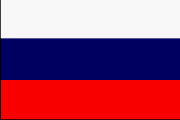



Ministry of Health
In cooperation and consultation with Communist Part organs, the Ministry of Health set basic policies and plans for the entire Soviet health care system.
Administration and control of these numerous medical facilities was carried out by a centralized, hierarchically structured government apparatus. Having emphasized quantitative expansion of medical services, the Soviet Union by the 1980s took first place worldwide with respect to the number of hospital beds and physicians per 10,000 people and had in place a huge network of hospitals, polyclinics, consultation centers, and emergency first-aid stations throughout the country. The numerous administrative entities and planning offices spawned a huge bureaucracy, with all the attendant problems of overbureaucratization, red tape, and paper deluge. The Fourth Department of the Ministry of Health operated a separate network of clinics, hospitals, and sanatoriums exclusively for top party and government officials as well as for other elite groups.
The Soviets made significant efforts in biotechnology research and development, but these programs did not generate any of the biotechnology
products which appeared in the West. The Soviet and Russian systems have not translated world-class research into medical applications. The Soviets and Russians lagged in the development and production of vaccines, and suffered from poor quality production facilities.
The Third Main Administration under the USSR Ministry of Health was tasked in 1967 with technical substantiation of major chemistry construction projects. The Main Administration of Microbiological Industry was simultaneously tasked with countering and preparing to conduct biological warfare attacks. The Medstatistika NII [scientific research institute] and the Science Center for Molecular Diagnostics were institutes of the Third Main Administration, along with other "hygienic" institutes of the same agency in Volgograd and Leningrad.
While the research institutes and factories of the two specialized "offensive" biological warfare programs [15 GUMO and Biopreparat] were officially regarded as pursuing defensive ends, in fact a third system pursued defensive ends -- the large group of "plague" civilian research institutes of the USSR Ministry of Health. Some "plague" institutes, for instance, in Rostov, Saratov and Stavropol, also took part in offensive tasks, though their role was purely auxiiiary.
Currently the Department for the Medical Industry of the Ministry of Industry is responsible for management of Russia's biotechnology and pharmaceutical industries.
Sources and Resources
- Expert Eyes Russian Chemical Arsenals : JPRS-TAC-95-006-L : 26 January 1995
http://www.fas.org/nuke/guide/russia/agency/moh.htm
Maintained by Webmaster
Updated Tuesday, October 20, 1998 10:25:22 AM






